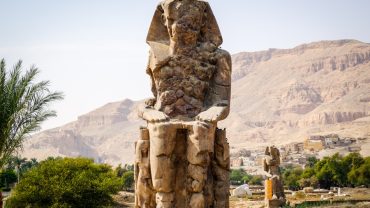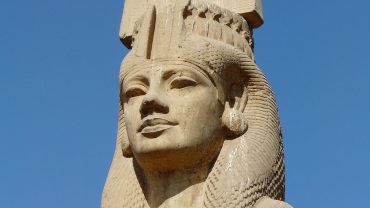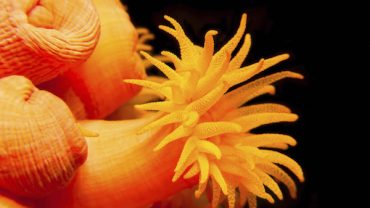khonsu egyptian god- «Khonsu, Symbol of the Moon in Ancient Egyptian Civilization: Facts and History of the God’s Role in Religious Beliefs, Myths, Temples, and Tales of the Pharaonic Era»
Khonsu was an ancient Egyptian god of the Moon, depicted as a man with the head of a hawk or a crocodile, and sometimes as a full crocodile. He was considered the son of Amun and Mut, two of the most important deities in the pantheon of ancient Egypt.
Khonsu was known as the god of time, and was associated with the measurement of time, as well as with the cycles of the Moon. He was also considered to be a god of fertility, and was associated with the flooding of the Nile, which was vital for the agricultural prosperity of ancient Egypt.
As the god of the Moon, Khonsu was believed to have the power to control the night and to protect the people during the hours of darkness. He was also thought to have the ability to heal the sick and to protect travelers from harm.
Khonsu was widely worshipped in ancient Egypt, and his cult center was located in the city of Thebes, where his temple was one of the most important in the city. The temple of Khonsu was known as the «House of Khonsu», and was considered to be one of the most sacred places in ancient Egypt.
Khonsu was also depicted in many works of art, including statues, reliefs, and amulets. He was often depicted holding a crook and flail, symbols of kingship, which emphasizes his power. He was also depicted with a lunar disk on his head, representing his connection to the Moon.
In conclusion, Khonsu was an important god in ancient Egyptian religion, revered for his role in controlling the cycles of the Moon, measuring time, and providing protection and fertility. His cult center was in Thebes and was widely worshipped throughout ancient Egypt. His depiction in art and symbols like crook and flail, lunar disk highlights his power and significance in Pharaonic civilization.
Khonsu Egyptian God
Worship of Symbol of the Moon
The worship of the symbol of the Moon, and specifically the god Khonsu, played a significant role in ancient Egyptian religion and culture. The Moon was seen as a powerful and benevolent force, and its cycles were closely monitored and celebrated. The flooding of the Nile, which was vital for agriculture in ancient Egypt, was also closely linked to the cycles of the Moon.
Khonsu, as the god of the Moon, was considered to have a direct influence on the flooding of the Nile and the fertility of the land. As such, he was seen as a powerful god who could bring prosperity and abundance to the people. He was also considered to be a god of healing and protection, and was thought to have the power to protect travelers and heal the sick during the hours of darkness.
The temple of Khonsu in Thebes was one of the most important in the city and was considered to be a sacred place. The temple was home to many priests who were responsible for the rituals and ceremonies associated with the worship of Khonsu. These rituals included offerings of food and drink, as well as performances of music and dance.
egyptian god of the moon
Khonsu was also depicted in many works of art, including statues, reliefs, and amulets. These works of art were often used in religious ceremonies and were believed to have the power to protect the people from harm and to bring blessings of fertility and prosperity. The depiction of Khonsu in art, often holding crook and flail, lunar disk on his head and a man with head of a hawk or crocodile emphasizes the importance of the god of the moon in ancient Egyptian culture.
In conclusion, the worship of the symbol of the Moon, and specifically the god Khonsu, played a significant role in ancient Egyptian religion and culture. The cycles of the Moon were closely monitored and celebrated, and Khonsu was seen as a powerful god who could bring prosperity and abundance to the people. He was widely worshipped through rituals, ceremonies and art.
Khonsu Egyptian God
Statue of God Khonsu
Statues of the god Khonsu were a common feature in ancient Egyptian art and were used in religious ceremonies and as decorative elements in temples and tombs. The statues were typically made of materials such as stone, bronze, and wood and were often painted or gilded to enhance their visual appeal.
The statues of Khonsu were typically depicted as a man with the head of a hawk or a crocodile, and sometimes as a full crocodile. He was also depicted holding a crook and flail, symbols of kingship, which emphasizes his power. He was also depicted with a lunar disk on his head, representing his connection to the Moon. The statues of Khonsu were typically depicted in a standing position, with the god’s arms held at his sides and his head held high.
Statues of Khonsu were often placed in temples and other religious buildings, such as the temple of Khonsu in Thebes. These statues were typically placed in a prominent location within the temple, such as the inner sanctum or the entrance hall, and were often used as the focal point of religious ceremonies and rituals.
In addition to being used in religious contexts, statues of Khonsu were also used as decorative elements in tombs. These statues were typically placed in the tomb’s inner chamber or in a chapel dedicated to the god. They were believed to protect the deceased and ensure their safe passage into the afterlife.
egyptian god of the moon
Khonsu statues have been found in many archaeological excavations, and many of them are now housed in museums around the world. These statues provide valuable insights into the beliefs and practices of ancient Egyptians and offer a glimpse into the importance of the god of the Moon in ancient Egyptian culture.
In conclusion, statues of the god Khonsu were an important feature in ancient Egyptian art, used in religious ceremonies and as decorative elements in temples and tombs. These statues were typically made of materials such as stone, bronze, and wood and were often painted or gilded to enhance their visual appeal. They were often depicted holding a crook and flail, symbols of kingship, with a lunar disk on his head and in a standing position. They were believed to protect the deceased and ensure their safe passage into the afterlife.
Discover the history of ancient Egypt and the life of the pharaohs through the best packages of pyramid tours of Egypt and a visit to Luxor and Aswan
Choose from over 100 offers tour programs in Hurghada, Sharm El Sheikh, Marsa Alam or Cairo
























Комментировать (0)